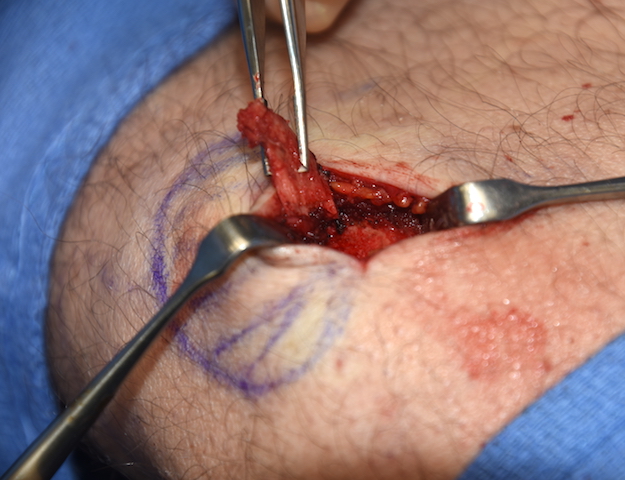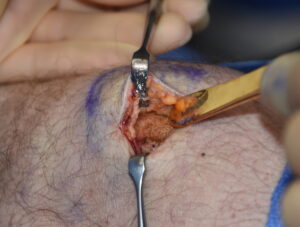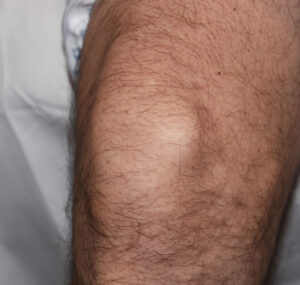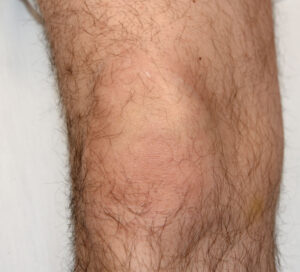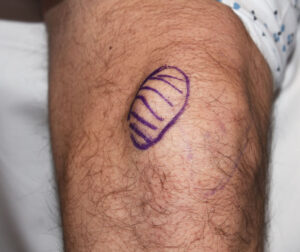Background: The patella or knee cap is flat triangular-shaped bone which protects the knee joint from the front. It is a large sesamoid bone whose upper half has a coarse surface shape which serves as the attachment of the quadriceps femoris tendon. It is prone to having exostoses or bony bumps. The inferior or apex of the patella serves as the attachment of the patellar tendon.
Many people have ‘bony’ knees and they could be referring to the skeletonized appearance of them with little subcutaneous fat cover. They may also be referring to the visible bumps on their upper half of the knee cap. These are the most visible edges of the knee cap that are seen when the knee is extended but are magnified in appearance when the knee is bent.
Case Study: This male had long been bothered by the appearance of both knee caps which had prominent bumps on their upper medial aspect. It had bothered him for a long time and he wanted them reduced.
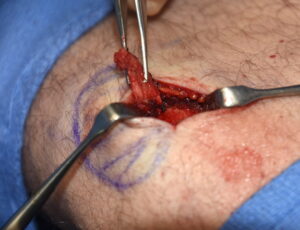
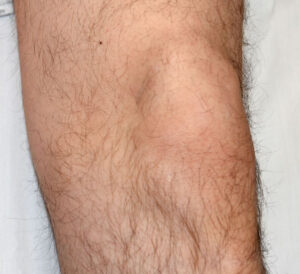
Reduction of superior exostoses of the knee cap can be effectively done. But because it involves splitting the fascia of the quadriceps muscle for access there will be some postoperative discomfort given the frequent bending of the knee. In asking the patient how long it took for the knees to fully recover he stated it was ‘months’…which suggests one should not consider this procedure lightly.
Case Highlights:
1) The kneecap (patella) has a distinct shape which is prone to prominent bump or edges.
2) A prominent patellar bump can be successfully reduced by a shaving technique.
3) Because any anterior access to the patella involves splitting the overlying fascia of the quadriceps femoris muscle there will be some postoperative extension discomfort.
Dr. Barry Eppley
Indianapolis, Indiana

